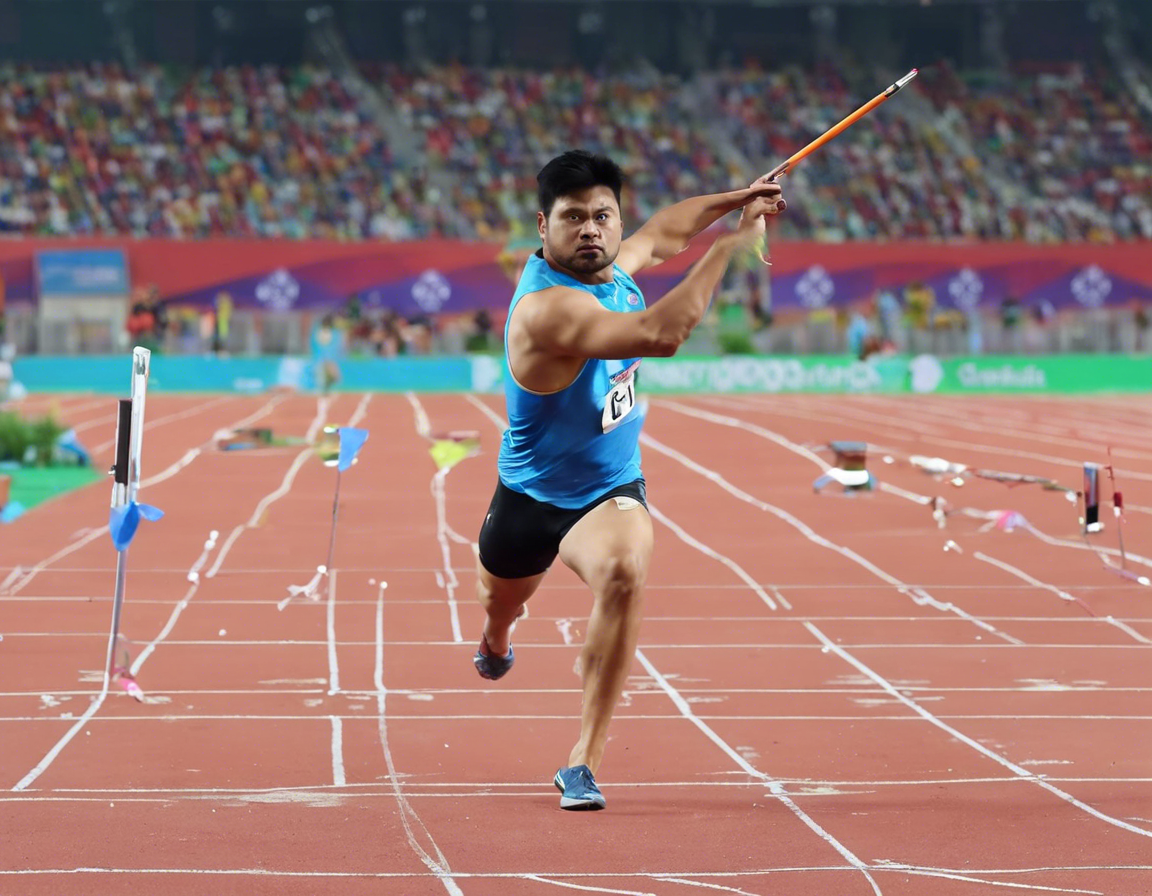Mastering Javelin Throw at the 2023 Asian Games
The javelin throw is one of the most captivating and challenging track and field events, requiring a unique blend of strength, agility, and technique. Aspiring athletes looking to compete and excel in the javelin throw at the 2023 Asian Games need to hone their skills and train diligently. In this comprehensive guide, we will explore the essential aspects of mastering the javelin throw, from training techniques to mental preparation, as well as competition strategies.
Understanding the Javelin Throw
Before diving into training methods and techniques, it is crucial to understand the fundamentals of the javelin throw. The javelin is a spear-like object made of metal and fiberglass, with a minimum length and weight prescribed for official competitions. Athletes must adhere to specific rules regarding the grip, approach, and release of the javelin to ensure a fair and safe competition.
Key Elements of Javelin Technique
- Grip: The javelin should be held at the grip point, with the cord wrapped around the fingers to secure it during the throw.
- Approach: Athletes typically perform a run-up before releasing the javelin, requiring coordination and precision to generate maximum momentum.
- Release: The release of the javelin plays a crucial role in determining the distance and accuracy of the throw, requiring proper timing and technique.
Training for Javelin Throw Success
Achieving proficiency in the javelin throw requires a structured training program that focuses on improving strength, speed, and technique. Here are some key training elements to consider:
Strength Training
- Core Strength: A strong core is essential for stability and power generation during the throw. Incorporate exercises like planks, Russian twists, and medicine ball throws.
- Shoulder and Arm Strength: Strengthening the shoulder and arm muscles is vital for a powerful javelin release. Focus on exercises like overhead presses, lateral raises, and tricep extensions.
Speed and Agility
- Sprint Work: Develop explosive speed and acceleration through sprint drills and intervals.
- Plyometric Exercises: Incorporate plyometric drills like box jumps, bounding, and hurdle hops to improve explosive power and agility.
Enhancing Javelin Technique
Refining your javelin technique is a continuous process that requires feedback from coaches and regular practice. Focus on the following aspects to enhance your throwing technique:
Approach and Run-up
- Stride Length: Optimize your stride length to generate maximum speed and momentum during the run-up.
- Timing: Coordinate your steps with the javelin release to ensure proper weight transfer and follow-through.
Release Technique
- Shoulder Position: Maintain a high shoulder position during the release to maximize the javelin’s trajectory.
- Follow-Through: Emphasize a strong and fluid follow-through motion to maximize distance and accuracy.
Mental Preparation for Competition
In addition to physical training, mental preparation plays a crucial role in javelin throw success. Athletes must cultivate focus, confidence, and resilience to perform at their best during competitions. Here are some tips for mental preparation:
Visualization
Visualize successful throws and positive outcomes to build confidence and mental toughness.
Focus and Concentration
Practice mental focus techniques such as deep breathing and positive self-talk to stay focused during competitions.
Competition Strategies
On competition day, it is essential to have a well-defined strategy to maximize your performance. Consider the following strategies for javelin throw competitions:
Warm-up Routine
Implement a thorough warm-up routine that includes dynamic stretches, drills, and practice throws to prepare your body for optimal performance.
Technical Focus
During competition, focus on executing your technical cues and key aspects of your throwing technique to maintain consistency and accuracy.
Adaptability
Be prepared to adjust your approach and technique based on weather conditions, runway surface, and other external factors that may affect your throws.
Frequently Asked Questions (FAQs) About Mastering Javelin Throw
-
How can I improve my javelin throw distance?
To improve your throw distance, focus on strength training, technique refinement, and regular practice to enhance your power and accuracy. -
What is the optimal javelin grip position?
The javelin should be gripped at the corded grip point, with the index finger and thumb forming a V-shape for stability and control. -
How important is footwork in the javelin throw?
Footwork is crucial in generating speed and momentum during the run-up. Focus on proper stride length and coordination with the release for optimal performance. -
What are common mistakes to avoid in javelin throwing?
Common mistakes include a weak grip, improper release timing, and lack of follow-through. Work with a coach to identify and correct any technical errors. -
How can I stay mentally focused during javelin throw competitions?
Practice mindfulness techniques, visualization, and positive self-talk to build mental resilience and focus under pressure during competitions.
In conclusion, mastering the javelin throw requires a combination of physical training, technical refinement, and mental preparation. By focusing on strength, speed, technique, and mental resilience, athletes can enhance their performance and compete at their best at the 2023 Asian Games. Embrace the challenges of the sport, stay committed to your training, and strive for continuous improvement to reach your full potential in the javelin throw event.

